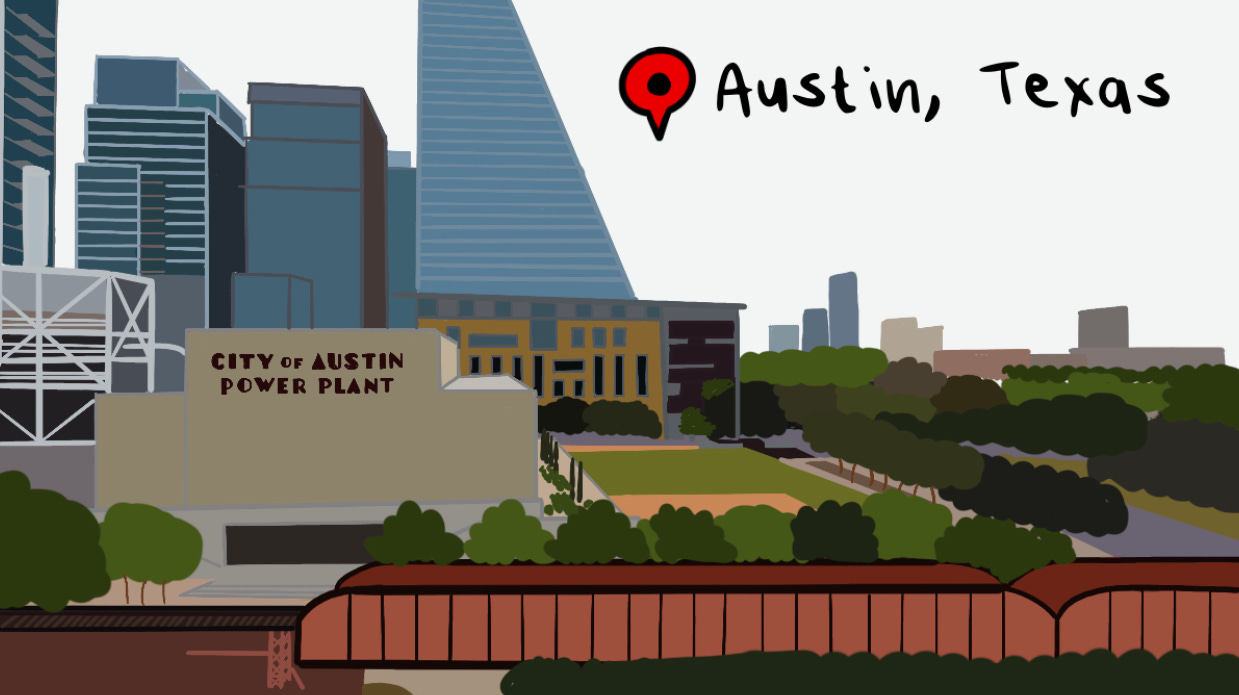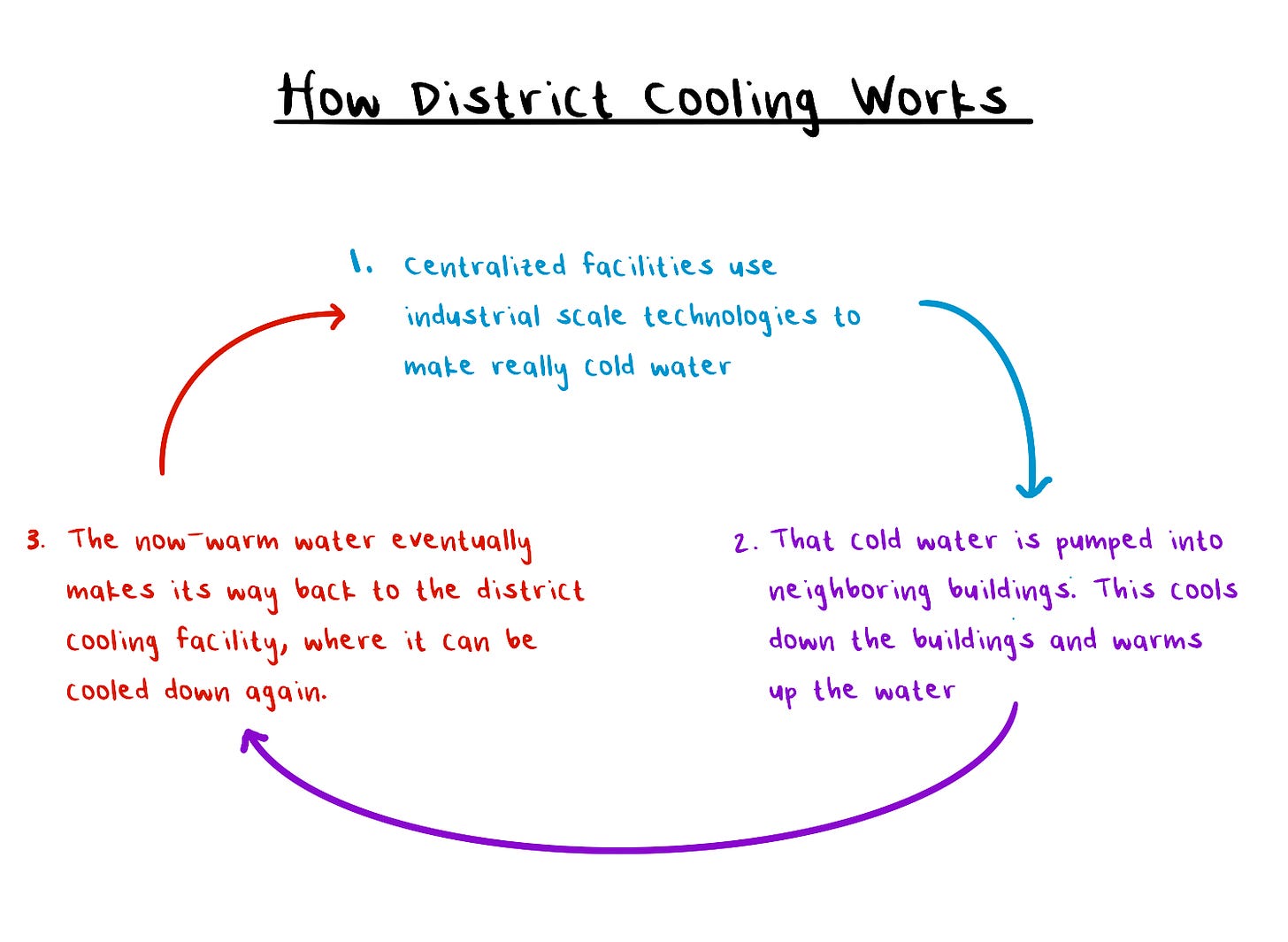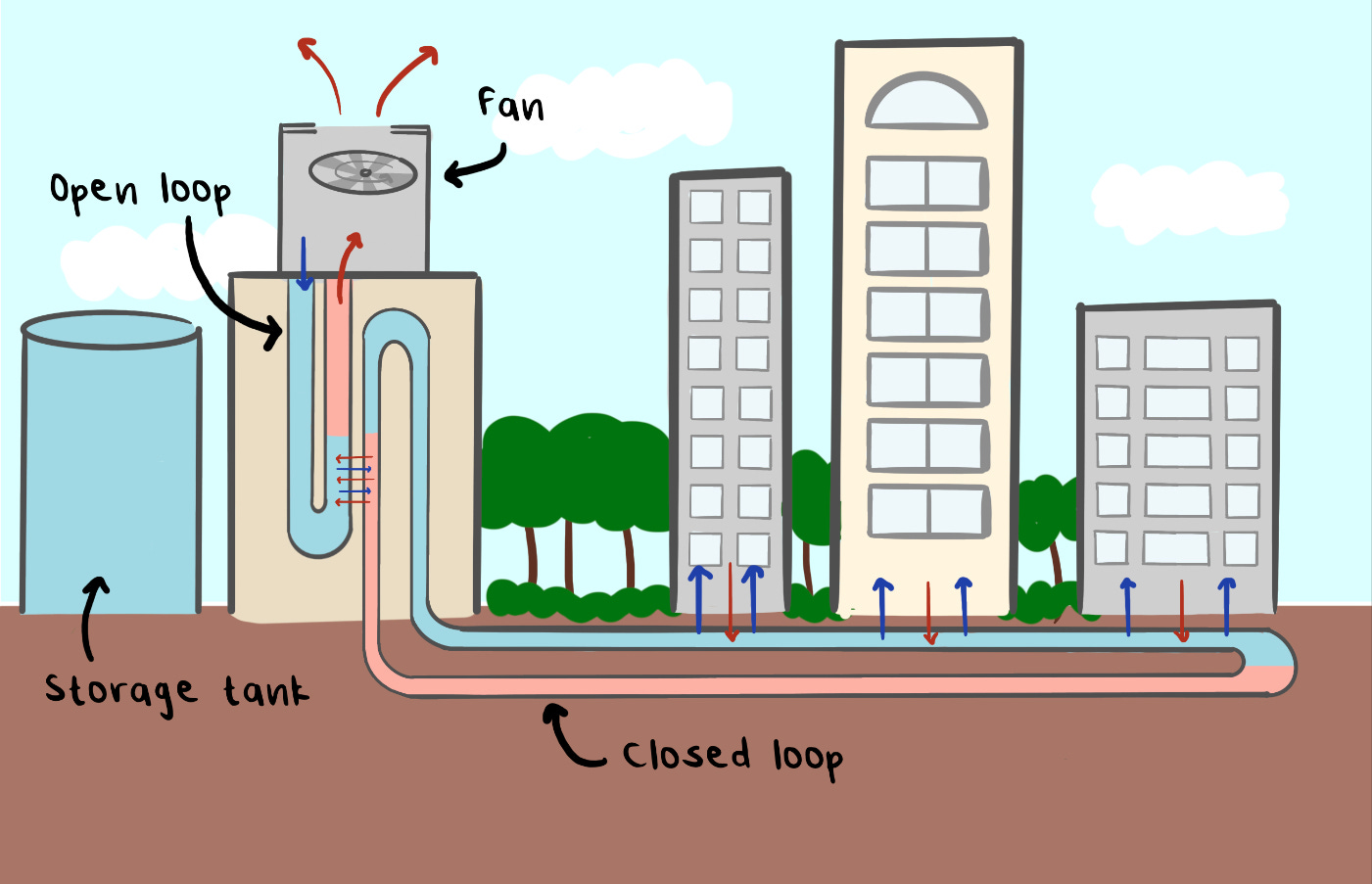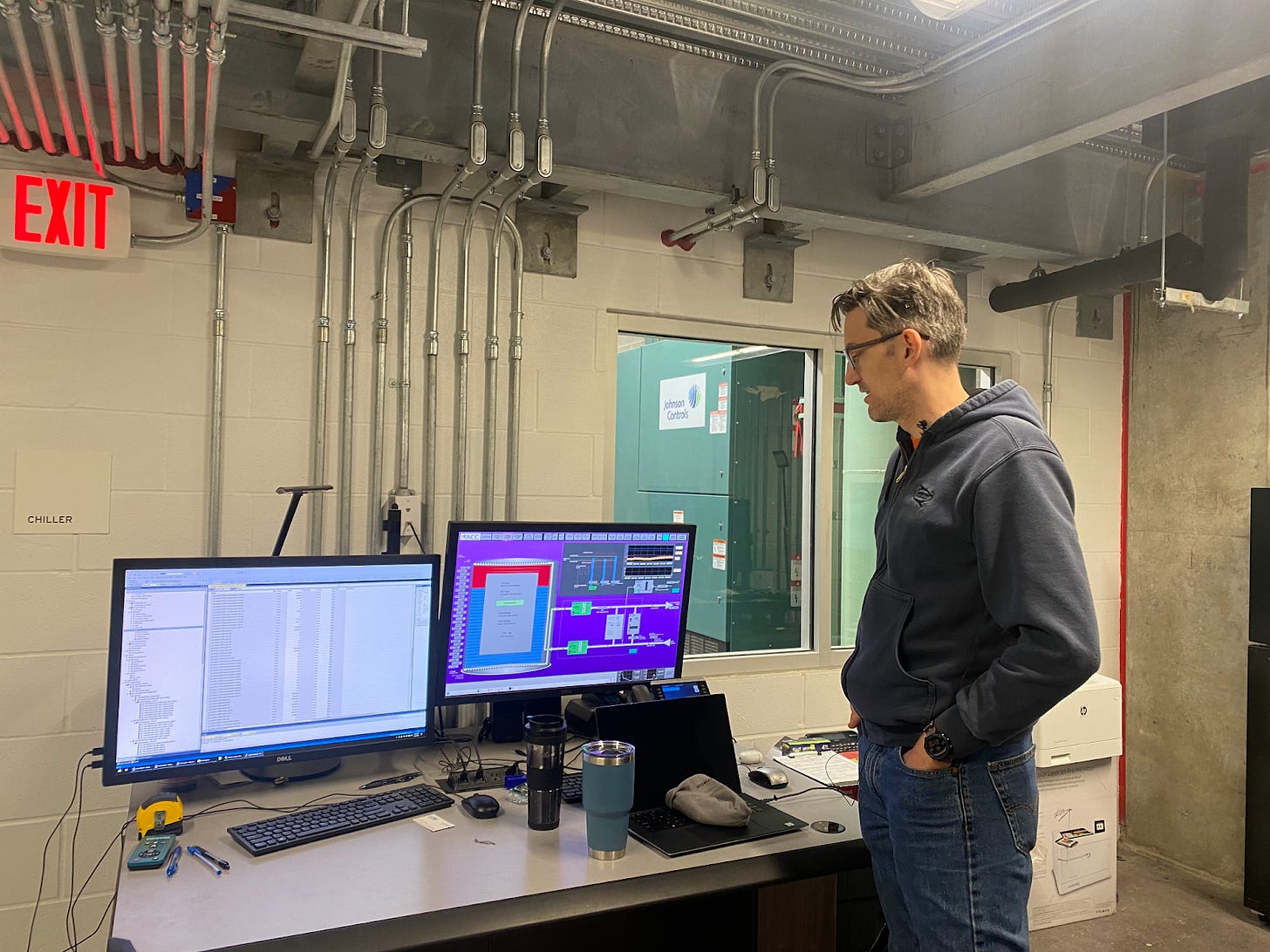Street Notes 5: Hot for District Cooling in Austin, Texas
Cool solutions for hot problems in the energy capital of America
When’s the last time you appreciated being able to take a deep breath through your nose? Probably not since you last had a stuffy nose, right? Funny how we only notice things when they aren’t working as they should.
Infrastructure (and climate solutions) sort of work the same way. When everything is functioning perfectly, it’s easy to take for granted all of the technologies and people that make our lives safe and comfortable. When things go wrong, on the other hand, we get headlines.
Austin, Texas, is a great example of this phenomenon.
Austin has gained recent notoriety for its winter freezes (just last month, 171,000 people lost power when Austin’s temperatures dipped to 15 degrees Fahrenheit, making headlines across the country). Sure, these temperatures are abnormally cold for Austin, but they’re not nearly as cold as those seen in the American Midwest, the Rockies, or the Northeast. These temperatures make headlines, though, because they cause power outages. We notice them because something goes wrong.
On the other hand, Austin’s heat rarely gets the same attention. Which seems crazy. Because Austin is really hot. More than a third of the year sees temperatures over 90 degrees Fahrenheit, and that number is only increasing. While Lyn was living in Austin last summer, the average day was well over 100 degrees Fahrenheit, with little relief at night. It was so hot that most days, her dog would refuse to go for a walk.
But that extreme heat doesn’t make national news because, for the most part, it isn’t causing major grid failures. But that’s not by accident or chance; there are a lot of under-celebrated people, facilities, and technologies hard at work making sure that regular life isn’t disrupted by the potentially dangerous heat in Austin. Today we’re going to talk about one of those often-invisible solutions: district cooling.
First, what’s district cooling?
To keep things simple, we can think of district cooling as indoor air conditioning for an entire neighborhood or network of buildings — from apartment buildings to campuses to hospitals to libraries.
How does this work? Well, district cooling systems can use a variety of different technologies. These depend on what’s best suited for the region and city the system is built in. But they all work in roughly the same way:
A couple weeks ago, we were lucky enough to tour Austin Energy’s District Cooling Facility at the Austin Community College Highland Campus (ACC). Austin Energy is a publicly owned utility in Austin, TX that provides power, and cooling, to local residents. Two of their team members — James Kassim and Whitney Moyer — showed us not only how their district cooling systems function, but how they create everyday value for the people who live, work, learn, and play in Austin.
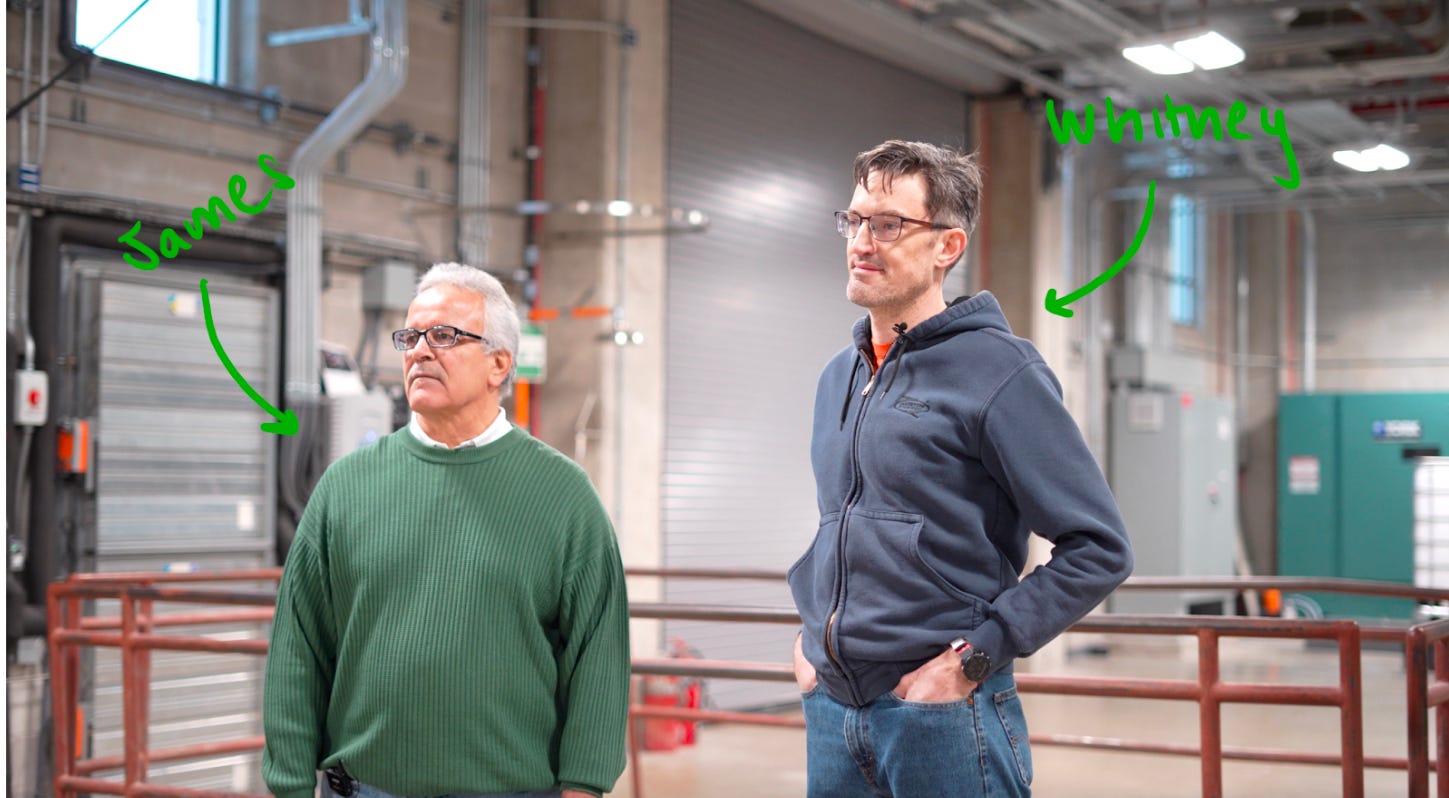
This particular facility — the latest of Austin Energy’s 7 facilities — is tucked neatly beside some of ACC’s buildings. The compact, 3-story building seems to take up nearly no space, yet it packs a lot of punch. This facility alone has the capacity to cool the equivalent of 1,500 homes, and does so twice as efficiently as traditional A/C units.
How does it work its magic? This particular plant uses evaporation to cool its water (if you remember high school chemistry class, evaporation allows heat to escape from water, which cools it down). This method uses a 2-loop system: one closed loop, and one open loop. Together, these loops draw heat out of buildings. They then move that heat back to the district cooling facility in the form of warm water. At the facility, that heat can be evaporated off — et voila! Efficient, large-scale cooling.
More details on how this works, for the curious:
Water in the closed loop system starts at the facility, where it’s cooled. That cold water is then pumped across buildings, where it is fed into those individual buildings' cooling systems. There, it absorbs the heat from those buildings while cooling them down. That water is now warm, and returns to the district cooling facility. At this point, that warm water in the closed loop is put next to the open loop.
The water in the open loop absorbs the heat from the (now-warm) water in the closed loop. This cools down the closed loop water, and makes the water in the open loop warm. This warm open-loop water is then pumped up to a giant fan on the roof of the facility, where some of that water is evaporated. That evaporation helps heat escape, which cools down the water in the open loop. Now that it’s cold, it can be used again in the cycle!
A couple more key features make this Austin Energy plant unique:
⚡️ Redundant energy sources. This facility gets its power from 2 sources — that means that if one source of power goes down, the facility can continue to operate using its other energy source!
🪣 Water storage. In our diagram above, you can see that the facility has a giant water storage tank. This tank holds water that has already been cooled, which can help reduce energy demand peaks. We'll talk about that more below!
Cool technology! But why should we care about it?
District cooling is a criminally under-appreciated climate solution. Some of the benefits are pretty obvious (more efficient air conditioning means less carbon emissions!). Others are less obvious — and actually have more impact on our day-to-day lives — so let’s focus on those.
💵 Lower utility bills
More efficient cooling doesn’t just mean less carbon emissions. It also means lower costs when it comes time to pay the bills for that cooling! And don't worry — even with district cooling, you still have control over your thermostat.
⚡️ Help prevent power outages
Remember that water storage tank we mentioned? It comes into play with load shifting. Load shifting is an energy management technique where energy usage is shifted from peak demand hours to off-peak hours. District cooling does this by cooling water during off-peak hours and storing it so it’s ready-to-use. Then, when people turn down their thermostats during peak hours, they’re able to use that cool water without adding strain to the electrical grid.
Eventually, that load-shifting capacity could even be used to only draw power from the grid when it’s sourcing from renewable energy sources (like solar and wind). This can make sure the system is being powered by renewables and reduce the need to burn oil or gas.
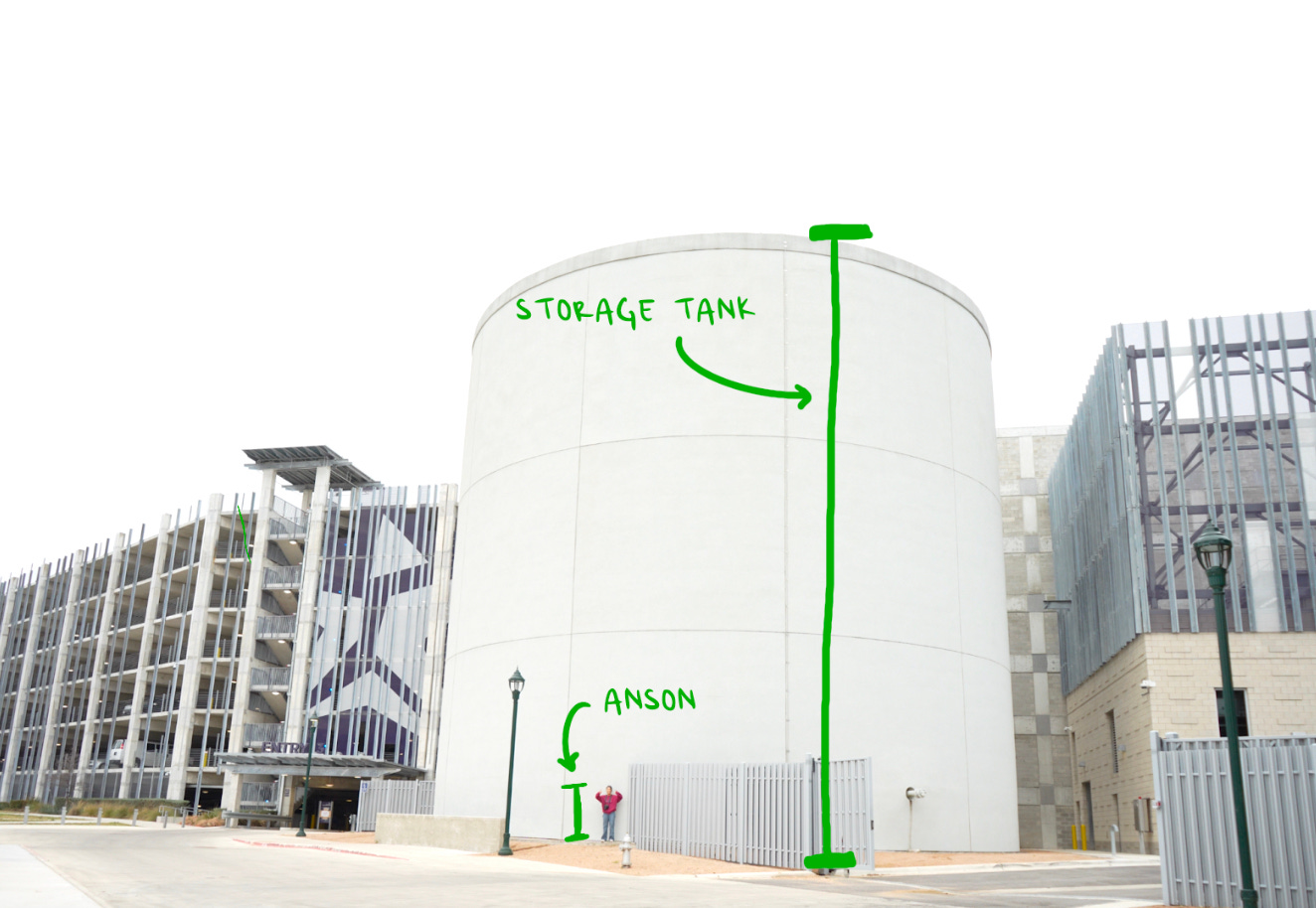
🪂 Resilience to power outages
Despite our best efforts, the power does still go out during peak hours. However, the district cooling facility uses 2 different energy sources. This redundancy means that even if one power source to a neighborhood goes out, the district cooling facility still has power from its second source. While buildings in the outage area won’t have power, they could still have air conditioning if they’re hooked up to the district cooling system.
🌱 Space!
We cannot emphasize how compact this system was — its footprint is smaller than many single-family lots. And by getting hooked up to district cooling, buildings eliminate the need to house their own individual cooling systems. This means that backyard or rooftop space can suddenly be used for green patios, gardens, pools, and parks. Those spaces increase property values, sequester carbon, and bring joy to the people who live and work in those buildings!
So, how do we put more of these to work?
First, we need people power! Though this plant is technically autonomous, there are still a lot of roles for people to play:
For the build: There are jobs for anyone and everyone when it comes to building these facilities — from electricians and contractors to project managers and budget gurus.
For the operation: Even autonomous plants require human attention. Engineers and operators keep a close eye on the plant using the monitoring system that Whitney built (you can see it below!), and they frequently visit in-person to maintain the equipment. This requires everyone from the folks who clean (the plant is absolutely spotless) to the engineers. In fact, before working at Austin Energy, Whitney was a nuclear plant operator!
Second, we need to pick places that are well-suited for district cooling. Some things that make a neighborhood a good fit:
Dense, urban areas: District cooling systems require quite a lot of infrastructure to get a building hooked up. So it makes a lot more sense to use these systems for larger buildings (like multi-family housing, or tall apartment & condo buildings), rather than single-family homes.
Places where you can build up: A district cooling doesn't require that much space (like we mentioned, this one's footprint was less than that of a typical suburban lot.) But you do need to house all the equipment, which means that you need to be able to build 3+ story structures.
New developments: These have the ability to incorporate the necessary infrastructure from the get-go.
Finally, we need to get excited about district cooling!
Having a district cooling plant is like always being able to breathe out of your nose. It saves residents money, opens up free space for rooftop decks and backyards, reduces air and noise pollution, and can even keep our A/C on when the power goes out. But these wins are easy to forget about — because we don't notice infrastructure when everything is going right.
As the hottest cities in the world get even hotter, district cooling can provide a clean (literally, and in terms of the climate), elegant solution to our global cooling needs and increasing energy demand. It's something that we should see in all major cities in the near future, and we hope you'll advocate for one in your community!






